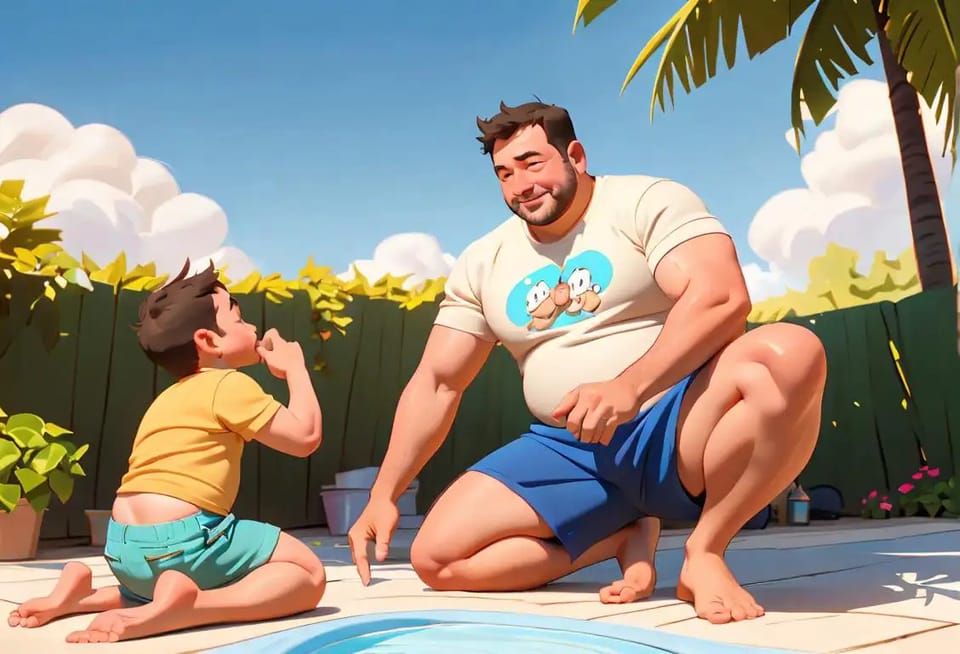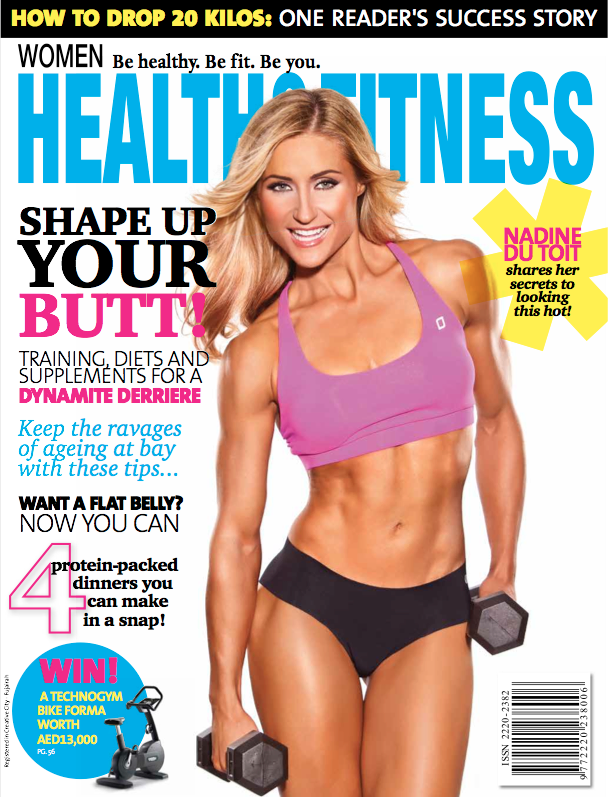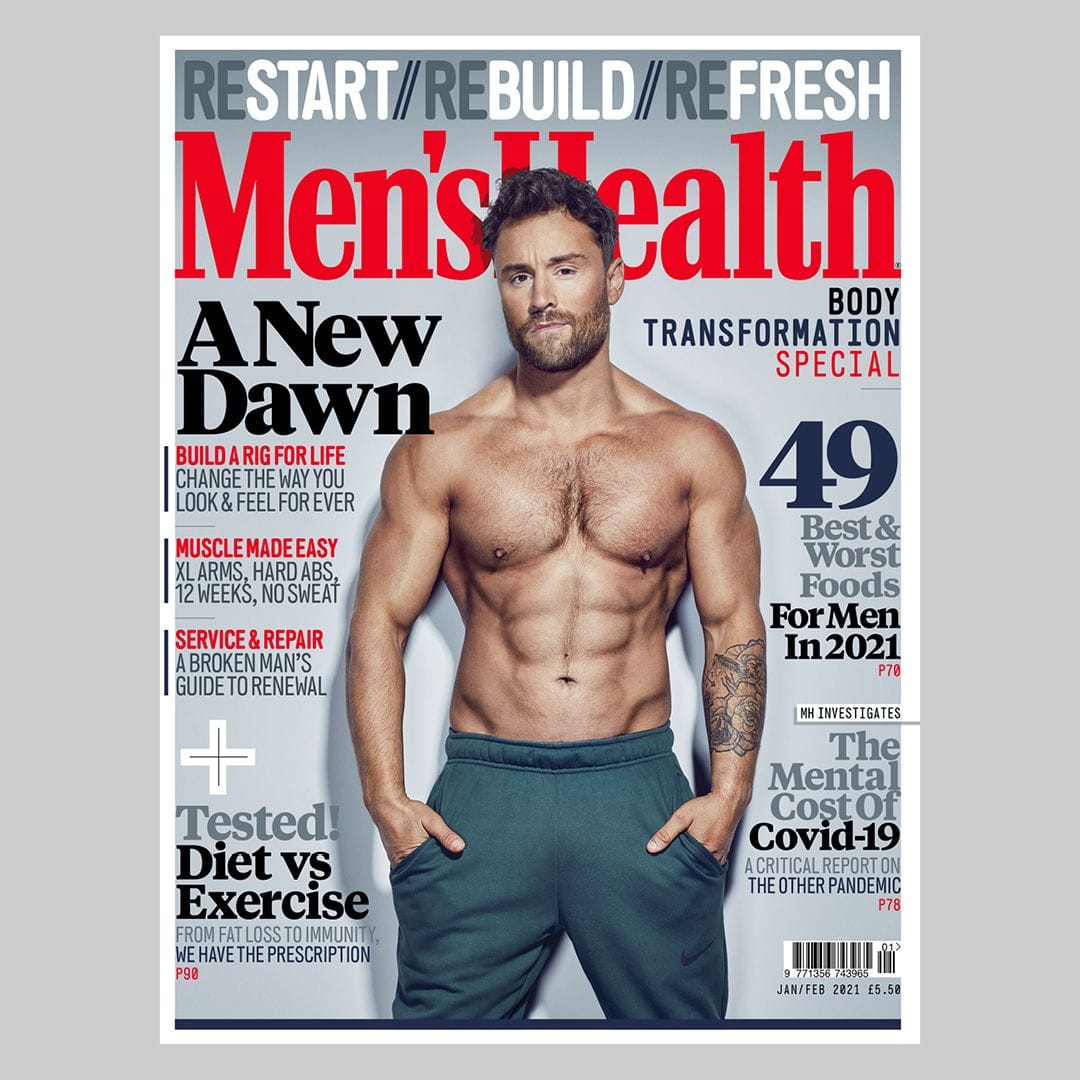"Dad Bods" and the dirty little secret of personal training.

There's many reasons why the Kansas City Chief's star quarterback Patrick Mahomes is a marketing juggernaut. Start with the obvious: he has three Super Bowl rings (and counting) before the age of 30. He might end up as the most accomplished NFL player in history.
He also has a boyish charm, a megawatt smile, and a swagger that exudes confidence without being obnoxious. And there's one more thing. It's evident in a recent photo that went viral. A shirtless Mahomes is hoisting up another Lombardi trophy, surrounded by a throng of admirers. There's the grin, the confidence, and, in the bottom of the photo, something else.
A gut. A belly. A protruding mass of flesh that is often referred to as a "Dad Bod."

Although it seems incongruous, one of the greatest player in NFL history doesn't have the "classic" athlete's physique. It turns out that Patrick Mahomes is just like the rest of us.
Well, not really. Not at all, in fact. Mahomes is a supremely gifted athlete who possesses skills that have nothing to do with his physique. From his spatial awareness, balance, and physical prowess (he can easily scramble for yards or block defensive players) to his mental ability to decipher broken plays and calmness under pressure, Mahomes exhibits qualities few other quarterbacks possess.
His only competition for the GOAT (greatest of all time) title for quarterbacks is Joe Montana and Tom Brady — both of whom, it should be noted — have dad bods.
So, how does this correlate to personal training? Therein lies personal training's dirty little secret. It's not a secret in the actual definition of the word. Almost all trainers are aware of it. It's just not talked about. In the fitness world, it's the proverbial "elephant in the room."
Here's the secret: prioritizing functional fitness goals over aesthetic ones usually results in more success — especially for people new to fitness and health. Now, I'm not saying "looking good" isn't a major motivation for people. I totally get that. I'm not completely untethered from reality. I like looking good myself. Even Mother Teresa occasionally cast some sideways glances in the mirror.
But, what I am saying is that aesthetic goals are very ephemeral — they're rarely connected to anything concrete. Aesthetics wax and wane. For example, is there an accepted aesthetic standard for "buns of steel" or "rock hard abs?"
Athletes such as Patrick Mahomes have a few advantages over most people. Certainly they have access to the finest training techniques and professionals that money can buy. But, even more consequentially, their training is dedicated to concrete athletic goals whose success is easier to measure. In Mahomes' case, that means training his core and hips for strength and mobility in order to evade pass rushers and make off-balance throws (a skill that Mahomes has perfected and is now often emulated by younger quarterbacks.) If that training results in a "six-pack," well, that's a tangential benefit, but nowhere near the main concern.
Most people signing up for training aren't elite athletes, of course. Furthermore, many people looking to invest in training have no personal narrative of fitness. That knowledge void has to be filled with something and that "something" usually has very little to do with fitness.
Since most people don't evade 300-pound lineman for a living, and since evolution has negated the need to evade saber-toothed tigers, most people form an image of what fitness is. That image is often aided and abetted by the media. It might very well look like this:

Or this:

Are those aspirational ideals attainable for most people? Well, for some people, they are. But for many people, they're not. So, the question becomes...now what? What should be the primary motivation for exercising?
For people who are new to fitness (or returning after being out of shape for a long time) I encourage them to establish functional goals while understanding that the aesthetics will follow.
Target walking up the big hill near your house or apartment, for example. Or developing the strength to easily carry large bags of groceries. Or getting out of bed pain-free. Or the flexibility and balance necessary for putting on your pants without the fear of toppling over.
Set, smaller, concrete goals that you can achieve and feel good about accomplishing. After those goals have been met, set new ones. Establishing functional goals also has the benefit of having aesthetics "hard-wired" in. If you set a goal of conquering the huge hill near your house, not only will you reap the strength and conditioning rewards — you will also become leaner in addition to be being fitter.
Very few of us will be able to hoist a Super Bowl trophy like Patrick Mahomes. But many of us will (or at least want to) hoist our children in the air. Or perhaps our dog. Or cat. Or the compost bin. Whatever the goal, we should be able to do it with relative ease and free of pain.
Even if we're a few cans short of a six-pack.
Member discussion